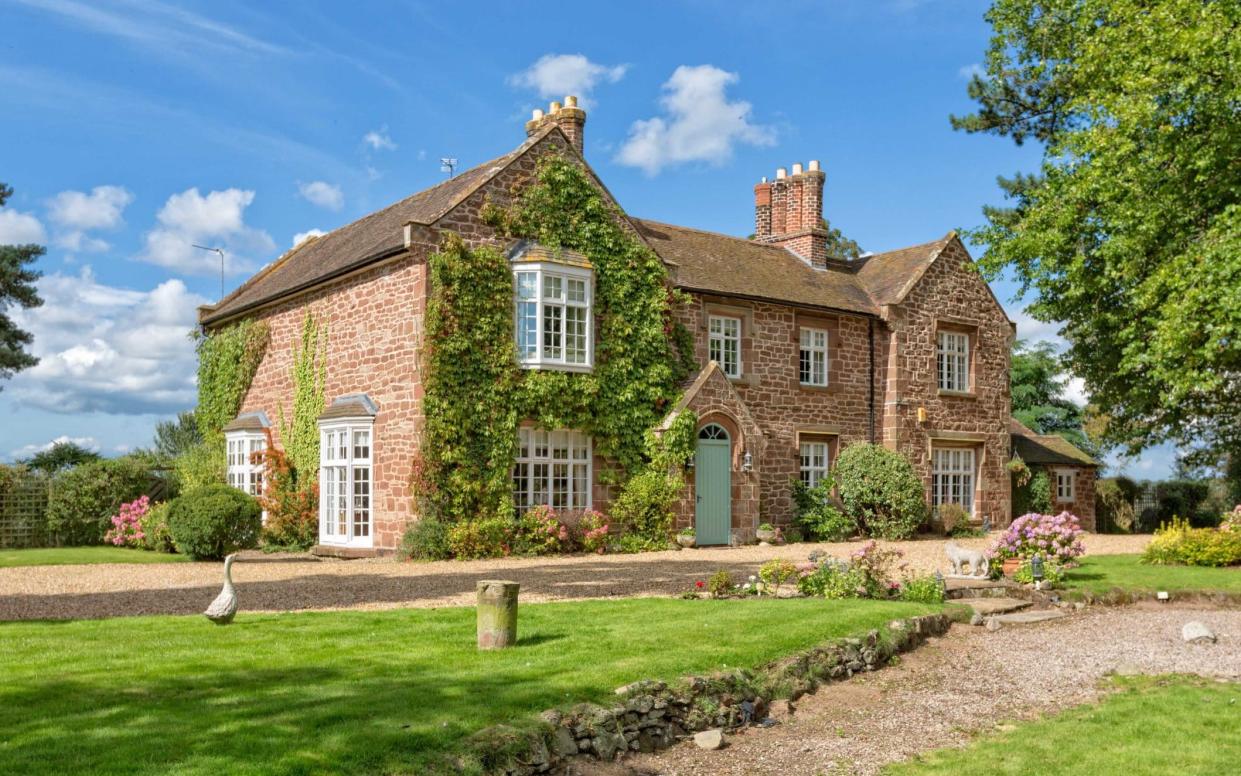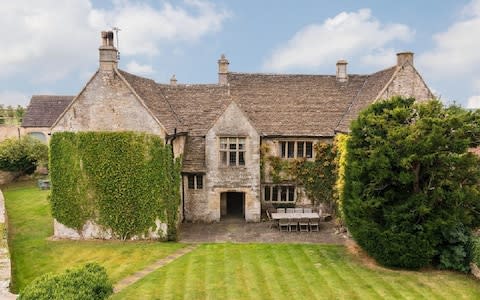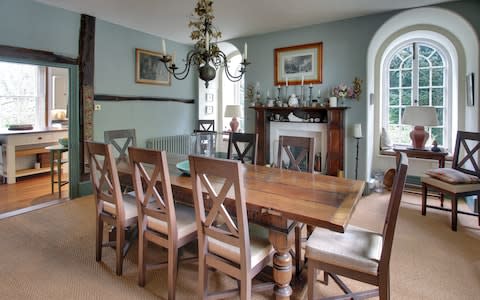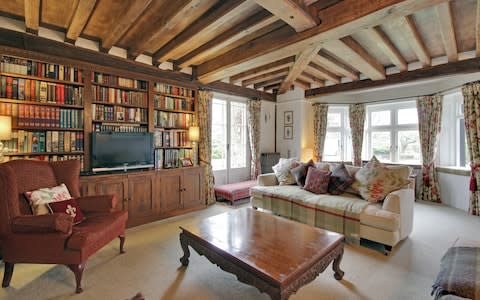Looking to move but can't sell your home? How to make a deal in this slow market

In some parts of the country, the property market is in stasis. Many people are either desperate to buy a home but cannot find anything they like, or desperate to sell but cannot snag a buyer.
On the face of it, it sounds like there should be a simple solution to get the two sides together. But there’s little new stock coming on to the market, leading to pent-up demand among buyers. Many vendors are still sticking with peak 2014 prices and are struggling to come to terms with 2019’s still-haven’t-a-clue-where-we’re-going -with-Brexit reality.
Sticky times require clever measures. We all know that a property needs to be priced correctly and look good to sell, but what are some of the less obvious – and easy – tips that might help shift your property?
Use online price brackets and stamp duty bands to your advantage
No one likes to lower their asking price, but pitch it right and you may end up selling for what you wanted in the first place – or more. The default setting on Rightmove sorts properties by highest to lowest price, so pitching just below the banded threshold will put your listing near the top.
“We recently had a three-bedroom house near Sloane Square [in London], which we reduced from £2.595 million to £2.495 million, putting it in the £2-2.5 million price bracket on Rightmove, rather than the slightly higher one,” says Christian Warman of estate agency Tedworth Property. “It had instant impact, with three offers received within 10 days.

“The ultimate buyer had an initial budget of £2.2 million but begged and borrowed to find the rest to make an asking price offer. I asked them why they were only inquiring now and it was because they’d set their price limit to £2.5 million on the search engine and weren’t aware of the property until the price was reduced.”
Similarly, pricing the property just beneath the next stamp duty band could be a great tactical advantage, says Robert Dawson of Jackson-Stops. “We marketed an apartment in Pimlico whose owners wanted to keep their listing at £1.1 million. We noticed that properties priced at exactly £1 million had got more interest on the property portals. We suggested relisting the property at £1 million and within two weeks, we had competing bids at the full asking price – achieving more than the owner had expected.”
Offer to pay your buyer’s stamp duty
As bad as Brexit has been for plunging the property market into uncertainty, it’s stamp duty (SDLT) that has really put the brakes on transaction levels. That’s particularly the case in London, home to 60 per cent of the country’s properties worth more than £1 million, the threshold at which SDLT becomes far more painful after the reforms of 2014.

In London’s super-prime market, the SDLT alone can run into the millions, not including the additional 3 percentage points for second homes. But this pressure point can be used to get the ball rolling at all ends of the market.
“While many buyers will push themselves financially to afford their forever family home, identifying funds to cover stamp duty can prove prohibitive,” says Rupert Reeves of estate agency Carter Jonas.
“At the same time, for downsizers in particular, many of whom are releasing equity from the sale of their property, covering the cost of SDLT for potential buyers can smooth out the final hurdle,” says Reeves, who adds that if the vendor pays the stamp duty, buyers must disclose this fact to their mortgage lender and solicitor.
It’s a common carrot used by developers to tempt buyers sitting on the fence. Housebuilder Kier Living, in partnership with Carter Jonas, is covering the SDLT costs of buyers at The Park in Fenstanton, Cambridge, where three-bedroom detached houses cost from £334,995. That price would incur a £1,749 SDLT bill.

If you can’t afford to pay the stamp duty outright, there are other ways of incentivising buyers. The owner of Latimer Manor, West Kingston, a picture-postcard, six-bedroom Cotswolds country house with extensive outbuildings in its nearly 14 acres of land, is willing to lend up to 25 per cent of the value of the property to the buyer as part of a private mortgage. The property, on the market for £2.995 million through Carter Jonas, also has a lower rate of stamp duty because it is classed as mixed use, so £149,750 is payable, compared with the full rate, which would be £237,150.
Play up school catchment areas
Parents are on the move now for September, and estate agents often throw in a mention of sought-after schools in the particulars, regardless of whether they’re in the catchment.
For vendors genuinely within the small catchment area of an Ofsted-rated “outstanding” school, shout about it in your property details. Keep an eye on the rating of your local schools, too. These things can change overnight, so if a school shifts from “good” to “outstanding” or zooms up the Sats league tables, suddenly your address may be hot property as a result.
Families will pay up to £100,000 more for a house within the catchment of an “outstanding” school, according to the comparison website Confused.com.

However, while those premiums may be harder to achieve in the current market – families in the £850,000 to £1 million market in London are more concerned about job security than trading up, says Graham Lawes of JLL – a sale is almost certain.
“Houses next to ‘outstanding’-rated Halstow Primary School in Greenwich, south-east London, for instance, don’t stick around on the market. The right house at the right money does still sell,” says Lawes.
Offer a sweetener in the deal
You don’t have to throw in a Ferrari to seal the deal, as the vendor of one Knightsbridge mews house recently did. But offering an added extra might make the crucial difference.
For more ordinary buyers, having all the white goods or made-to-measure curtains and blinds left in situ is a bonus that will potentially save thousands of pounds, and are probably of little use to the outgoing owner.
The vendor of a two-bedroom flat in Fulham, south-west London, is giving away two electric bikes as part of the sale if he gets asking price of £720,000 through SellMyHome.co.uk.
“In a slow market, he wanted to stand out against the competition,” says Will Clark of SellMyHome.co.uk. “Interesting incentives from vendors can help give your property an edge. At the very least, they make for a conversation starter and create a memorable market for buyers.”
Get planning for an extension
Beyond the immediate charms of the property in question, buyers’ eyes may widen at the potential to add value with an extension, granny annexe or significant improvement. “You can build in ‘hope value’ if you have an outbuilding that needs converting by obtaining planning permission ahead of the game,” says James Wort of Strutt & Parker. “Making this extra effort will help buyers see the full potential of your offering and the opportunity to add capital value to their potential investment.”

Homeowners have become increasingly savvy to planning potential within their grounds in recent years, buoyed by more relaxed planning laws, says Tom Wright, also of Strutt & Parker. On his books for £850,000 is Grange Farm, a six-bedroom Georgian farmhouse set in five acres of grounds in Edgerley, Shropshire.
Owners John and Stacey Barber turned the former working farm into a beautiful family home when they bought it six years ago, including building a two-storey extension.
For prospective buyers, it comes with an added attraction: a barn that has planning permission to be converted into a four-bedroom house with separate access via a drive across a field.
“If a buyer saw the full potential of the barn with planning as a stand-alone residential unit, it could add in the region of £150,000 to the value of the property,” says Wright.
Stage your home
You’ve probably seen developers furnishing show flats down to the champagne bucket beside the bath tub. They’re selling a lifestyle along with the property – and it works. Dressed flats usually sell quicker, and often the buyer (particularly those buying purely as an investment) wants the whole package, furniture and all.

Private owners are latching on. More than just decluttering and sprucing up your home to sell, why not give it a wholesale makeover, including renting some choice items? Olivia Conlon, founder of ThePropertyStagers, furnishes about 300 properties a year. She claims that they sell quicker and at 10 per cent above valuation on average, with the buyer often purchasing the furniture, too. Conlon charges from around £4,000 (plus VAT) to fully dress a one-bedroom property.
Staging is a helpful tactic in a sluggish market, says Cory Askew of Chestertons. “It lifts the spirit of a property that might otherwise seem unloved and gives buyers a much better first impression.”

 Yahoo News
Yahoo News 
